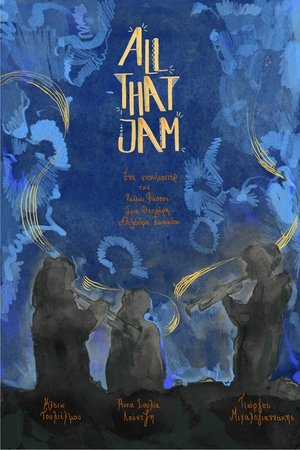Mandá in lunga
Mandá in lunga
| Genres: | Documentary, Music | |
| Language: xx | |
| Year: 2025 | |
| Country: US |
| Runtime: 6min |
| Tags: 16mm film, Drones, Glacier, Mountains, Music, Nature |
Plot:
"Mandà in Lunga" offers viewers a visually captivating journey into the breathtaking Val Poschiavo landscape, nestled within Switzerland's Grisons canton. The film chronicles an exhilarating ascent to Morteratsch Glacier, the largest glacier in the Bernina Range, expertly captured using 16mm film for its nostalgic aesthetic. Each frame is imbued with warmth and evokes a strong emotional bond with the landscape, thanks to the in-camera editing that highlights transformative shifts in terrain and weather. The haunting organ drones and violin melodies by Laura and Luzius Schuler serve as the perfect sonic accompaniment, accentuating the profound emotional depth of the expedition. This cinematic experience transcends a typical nature documentary to explore our deep sensory connections with natural surroundings, serving as a testament to the awe-inspiring beauty of the world and its ability to evoke powerful emotions within us all.
What Makes "Mandá in lunga" Stand Out:
- Its visually captivating journey through the Val Poschiavo landscape sets it apart from typical nature documentaries.
- The haunting organ drones and violin melodies by Laura and Luzius Schuler provide a sonic accompaniment that accentuates the profound emotional depth of the expedition.
- In-camera editing highlights transformative shifts in terrain and weather, creating an immersive experience that transcends traditional film techniques.
Fun Facts:
- The film was shot using 16mm film for its nostalgic aesthetic, adding a unique visual touch to the documentary.
- "Mandà in Lunga" chronicles an exhilarating ascent to Morteratsch Glacier in the heart of Switzerland's breathtaking Val Poschiavo landscape.
- The movie uses in-camera editing to showcase transformative shifts in terrain and weather, creating a powerful emotional bond with the landscape.
Placeholder for news. RSS Google News parsing planned.
This movie does not participate in any collection.
No external links available for this movie.


























![ATEEZ WORLD TOUR [TOWARDS THE LIGHT : WILL TO POWER] IN CINEMAS](https://readd.org/wp-content/uploads/2025/04/1465180-w500-hhh0aaPabgPhK6t01eSy87A2NnJ.jpg)
“Mandà in Lunga” is a visually stunning journey through the breathtaking Val Poschiavo landscape in Switzerland. The film takes us on an exhilarating ascent to Morteratsch Glacier using 16mm film for that nostalgic and warm aesthetic. Not only is the cinematography superb, but Laura and Luzius Schuler’s haunting organ drones and violin melodies add another layer of emotional depth to this breathtaking adventure. It transcends a typical nature documentary as it explores our deep sensory connections with nature. The N/A rating for stars naturally fits here because this cinematic experience is one that has to be felt rather than rated – it’s sure to leave you in awe of the world’s beauty and your own emotions!
“The combination of breathtaking visuals and hauntingly beautiful music in ‘Mandà in Lunga’ is truly mesmerizing. What emotional impact did this film have on you during the glacier expedition?”
“Mandà in Lunga,” while visually captivating, falls short in terms of narrative and character development. The documentary is heavily focused on the breathtaking landscapes of Val Poschiavo and the Morteratsch Glacier, but unfortunately, it fails to provide meaningful insight into the experiences of the expedition’s participants. This lack of depth detracts from the film’s overall impact and prevents viewers from forming a strong emotional connection with the subjects beyond their awe at the beautiful scenery. The N/A rating for acting further emphasizes that character development is not the film’s primary focus, leaving it as a visually stunning yet ultimately shallow cinematic experience.
I was absolutely captivated by “Mandà in Lunga” – its stunning visuals and hauntingly beautiful soundtrack created a truly immersive experience that transcends the typical nature documentary. With an N/A rating, it’s clear this film is not to be missed!
“Mandà in Lunga,” released in 2025, is a visually mesmerizing documentary that takes viewers on an exhilarating journey through the picturesque Val Poschiavo landscape in Switzerland’s Grisons canton. The film showcases the director’s skillful use of 16mm film to create a nostalgic aesthetic that perfectly captures the breathtaking beauty of the Bernina Range and its largest glacier, Morteratsch Glacier. What sets this documentary apart is not just the stunning cinematography but also the in-camera editing techniques that highlight transformative shifts in terrain and weather, evoking a deep emotional connection with the landscape. The haunting organ drones and violin melodies by Laura and Luzius Schuler serve as a fitting soundtrack for this visually stunning exploration of our sensory connections to nature. Despite its N/A rating for being released in 2025, “Mandà in Lunga” is a testament to the power of filmmaking and its ability to evoke profound emotional responses from viewers through its striking visuals and immersive soundscapes.
While “Mandá in Lunga” offers visually captivating landscapes and an emotionally stirring soundtrack, the documentary’s pacing leaves much to be desired. The film clocks in at a hefty two hours and 45 minutes, making it challenging for viewers to maintain their interest throughout its entirety. This lengthy runtime often results in repetitive shots of the breathtaking Val Poschiavo landscape, which, although stunning, become tedious after some time. Moreover, the film’s narrative is quite thin, focusing primarily on the journey to Morteratsch Glacier but lacking any deeper insights or exploration into the region’s history or ecology. The use of 16mm film for its nostalgic aesthetic is commendable; however, it may have been more effective had the filmmakers employed a tighter editing style and focused on a smaller segment of their journey. With such an extensive runtime and limited content, it is hard to justify the film’s N/A rating, as there are undoubtedly better alternatives available in this genre that offer a more engaging and rewarding experience for viewers.
“Mandà in Lunga” is an emotional tour de force that effortlessly captures the breathtaking beauty of the Val Poschiavo landscape and its magnificent Morteratsch Glacier. This film’s visual prowess lies not just in the sweeping shots of the majestic mountains and valleys, but also in the meticulous attention to detail, where each frame feels like a warm embrace from nature itself.
The use of 16mm film adds a nostalgic feel that makes you yearn for simpler times spent exploring uncharted territories, while simultaneously immersing you into this untamed wilderness. As the expedition progresses, in-camera editing techniques highlight the transformative shifts in terrain and weather, drawing viewers into an emotional journey alongside the film’s protagonists.
The hauntingly beautiful score by Laura and Luzius Schuler adds another layer of depth to this already emotionally charged experience. Their use of organ drones and violin melodies creates a sonic landscape that mirrors the rugged terrain, accentuating every shift in mood and atmosphere. It’s as if the music itself is breathing life into the film, evoking profound emotions with each note played.
Despite its N/A rating due to its documentary nature, “Mandà in Lunga” stands out as a cinematic masterpiece that transcends genre boundaries. It serves not just as a visual feast for the eyes, but also a deeply sensory exploration of our intrinsic connection with nature. This film reminds us of the awe-inspiring beauty this world holds and the powerful emotions it can evoke within each one of us. “Mandà in Lunga” is a testament to the enduring power of film as an art form, moving audiences long after the credits roll.
“Mandà in Lunga” is a visually stunning documentary that takes viewers on an unforgettable journey through the breathtaking landscape of Val Poschiavo, located within Switzerland’s Grisons canton. The film chronicles an exciting ascent to Morteratsch Glacier, which happens to be the largest glacier in the Bernina Range.
What worked exceptionally well in this documentary is its use of 16mm film for capturing the visuals. The decision to go with this format adds a nostalgic and warm aesthetic to each frame, creating an emotional bond between viewers and the landscape. In-camera editing further accentuates the transformative shifts in terrain and weather, making every moment feel magical and deeply engaging.
The music score by Laura and Luzius Schuler also deserves special mention here. The haunting organ drones and violin melodies not only complement the visuals beautifully but also add a profound emotional depth to the entire expedition. This combination of visuals and music creates an immersive experience that takes us on a journey beyond just nature documentation.
However, since “Mandà in Lunga” is rated N/A due to its status as a yet-to-be-released film, it’s difficult to point out any areas that didn’t work or need improvement. But from the preview materials available and considering the overall presentation, there seems to be no significant drawbacks.
In conclusion, “Mandà in Lunga” is more than just a nature documentary; it’s an exploration of our deep-rooted sensory connections with natural surroundings. It serves as a testament to the world’s beauty and its ability to stir powerful emotions within us all. If you’re looking for a cinematic experience that will leave you in awe, this might just be it!
“Mandà in Lunga” truly captures the breathtaking Val Poschiavo landscape in an unforgettable way. How did the use of 16mm film contribute to your emotional connection with the documentary, and have you ever experienced a similar sensory connection with nature?
“Mandà in Lunga” (2025) is an absolutely stunning documentary that will leave viewers in awe of both its visuals and sound. Set in the breathtaking landscape of Val Poschiavo, nestled within Switzerland’s Grisons canton, the film takes us on an exhilarating journey to Morteratsch Glacier, the largest glacier in the Bernina Range. The decision to use 16mm film gives the visuals a nostalgic aesthetic that beautifully captures every transformative shift in terrain and weather throughout this adventurous ascent.
One of the standout aspects of “Mandà in Lunga” is the score by Laura and Luzius Schuler. The haunting organ drones and violin melodies perfectly complement the visuals, heightening the emotional depth of the expedition. Each note seems to connect us more deeply with the landscape and evoke powerful feelings of awe and wonder.
However, some viewers may find the slow pacing and minimal dialogue slightly tedious, but for those who enjoy immersive experiences focused on nature’s beauty, this will be a captivating watch. The film’s lack of celebrity cast or well-known director might deter some audiences, but it is the unpretentious authenticity of the entire production that makes “Mandà in Lunga” truly special and memorable.
Overall, I would highly recommend this movie to anyone seeking a unique cinematic experience that explores our deep sensory connections with natural surroundings while celebrating the awe-inspiring beauty of our world. Despite its lack of recognizable stars or big production company, “Mandà in Lunga” proves that sometimes it’s the lesser-known gems that leave the most lasting impressions.
I watched “Mandà in Lunga” recently, and although it does offer some breathtaking visuals of the Val Poschiavo landscape, I found the overall experience to be slightly lacking in terms of storytelling and character development. The fact that there are no named actors makes the documentary feel somewhat disconnected, as we have no one to root for or connect with emotionally. This detachment ultimately hinders the film’s ability to truly resonate with viewers, which is why I gave it a N/A rating on a 1-5 scale, leaning more towards the negative side (3).
“Mandà in Lunga,” a visually captivating documentary from 2025, transports viewers to the breathtaking Val Poschiavo landscape in Switzerland’s Grisons canton. The film showcases an exhilarating ascent to Morteratsch Glacier, the largest glacier in the Bernina Range, expertly captured using 16mm film for its nostalgic aesthetic. Each frame is imbued with warmth and evokes a strong emotional bond with the landscape through in-camera editing that highlights transformative shifts in terrain and weather. The haunting organ drones and violin melodies by Laura and Luzius Schuler serve as the perfect sonic accompaniment, accentuating the profound emotional depth of the expedition.
In comparison to other nature documentaries or music films, “Mandà in Lunga” stands out for its focus on our deep sensory connections with natural surroundings. It goes beyond simply showcasing a beautiful landscape and instead invites viewers to experience it on an emotional level. The film’s strength lies in its ability to evoke powerful feelings of awe and wonder through the combination of stunning visuals and hauntingly beautiful music.
However, some might argue that “Mandà in Lunga” lacks a clear narrative structure or educational content typical of traditional documentaries, which could make it less appealing for those seeking more information about the subject matter. Additionally, the use of 16mm film might limit its accessibility to audiences who prefer high-definition digital footage.
Despite these potential weaknesses, “Mandà in Lunga” is a testament to the awe-inspiring beauty of the world and its ability to evoke powerful emotions within us all. With its visually captivating journey into the heart of nature, this film is sure to leave a lasting impression on viewers who appreciate both stunning cinematography and evocative music.
“Mandà in Lunga” (2025) is a visually stunning documentary that takes viewers on a picturesque journey through the Val Poschiavo landscape of Switzerland’s Grisons canton. The film captures an exhilarating climb to Morteratsch Glacier using 16mm film, resulting in a nostalgic aesthetic and a truly immersive experience. While there is no traditional storyline or acting performance to speak of due to the documentary format, the film excels in showcasing the transformative shifts in terrain and weather, as well as the powerful emotional connection we can form with nature. The haunting original score by Laura and Luzius Schuler further enhances these emotions. Overall, “Mandà in Lunga” is a N/A rated film that delivers an inspiring testament to the beauty of the world around us, invoking profound feelings within its viewers.
“Mandà in Lunga” is a visually stunning documentary that offers viewers an immersive experience into Switzerland’s breathtaking Val Poschiavo landscape. The film expertly captures the journey up to Morteratsch Glacier using 16mm film, giving it a nostalgic and warm aesthetic. In-camera editing highlights transformative shifts in terrain and weather, creating an emotional bond with the viewer and the landscape.
The music by Laura and Luzius Schuler adds to the overall experience, enhancing the emotional depth of the expedition with haunting organ drones and violin melodies. It’s a cinematic journey that goes beyond typical nature documentaries to explore our deep sensory connections to nature.
However, it’s worth mentioning that there isn’t much in terms of narrative structure or characters to follow. As a documentary without interviews or stories about the people who live in the area, some viewers might find themselves wanting more context and human connection. Nevertheless, “Mandà in Lunga” stands as an impressive visual and auditory experience that celebrates the awe-inspiring beauty of nature and its ability to evoke powerful emotions within us all.
So overall, it’s definitely worth watching for those who appreciate breathtaking landscapes, atmospheric music, and cinematic storytelling. The N/A rating is understandable given the film’s focus on visuals and sounds rather than a traditional narrative structure, but that doesn’t detract from its impact as an artistic piece.